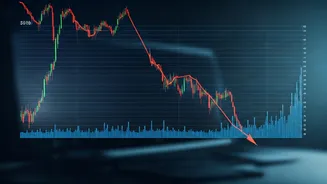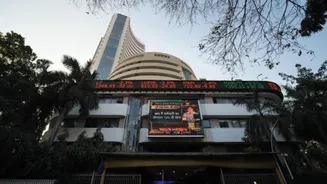Market Downturn Analysis
The Bank Nifty faced a correction, resulting in a fall below the 58,000 mark. The primary driver behind this decline was identified as profit booking,
indicating that investors were taking gains after a period of increases. This shift highlights the volatile nature of the market, where periods of growth are frequently followed by corrections. Such movements are quite common in financial markets and can be influenced by various factors. These can range from overall economic trends to sector-specific news. As the market experiences downward pressure, it’s imperative to analyze the crucial technical levels. These levels may offer vital insights into potential future movements. Recognizing and reacting to these levels can make a substantial difference in investment strategies, enabling traders to make informed decisions and better manage the associated risks.
Technical Level Examination
The technical levels are pivotal for understanding and interpreting the Bank Nifty's performance. These levels serve as benchmarks, providing valuable insights into potential areas of support and resistance. When the Bank Nifty dipped below 58,000, it's crucial to identify the immediate support levels. These levels are expected to help the index from further declines, as they often represent areas where buying activity is anticipated. Conversely, resistance levels are crucial to observe. These levels typically indicate points where selling pressure may intensify, thus stopping the index from rising further. Observing these levels is very important for market players. They are very useful for risk assessment, creating trade strategies, and making well-informed decisions. Keeping an eye on these technical markers will help with the market's stability and possible future course.
Leading Losing Stocks
The decline of the Bank Nifty had a notable impact on different stocks. Identifying the top losers within the index is essential for understanding the dynamics of the market. Stocks such as Kotak Mahindra, Axis Bank, and HDFC Bank showed a downturn. The decrease in these stocks indicates a widespread negative sentiment in the market. Analyzing the performances of the top losers provides valuable insights into the primary drivers of the index's downward movement. Factors such as market sentiment, sector-specific news, and company-specific issues can affect individual stocks and the broader index. This information is critical for traders and investors, allowing them to assess the market trends and make informed decisions. Monitoring the top losers helps to fine-tune investment approaches and reduce potential risks.
Support and Resistance
Understanding the support and resistance levels is critical for anyone interested in the Bank Nifty. Support levels represent price points at which a decline is expected to halt due to increased buying interest. Identifying these levels is useful for investors who look to enter or hold positions. On the other hand, resistance levels signify price points where the index is expected to face selling pressure, stopping it from rising. The interplay of support and resistance levels defines the trading range of the Bank Nifty. Identifying and analyzing these levels helps traders with risk management and assists in devising effective strategies. Keeping an eye on these levels can help determine potential entry and exit points, reducing exposure to market volatility. In the fluctuating market, understanding the support and resistance outlook is very important for making prudent decisions.












